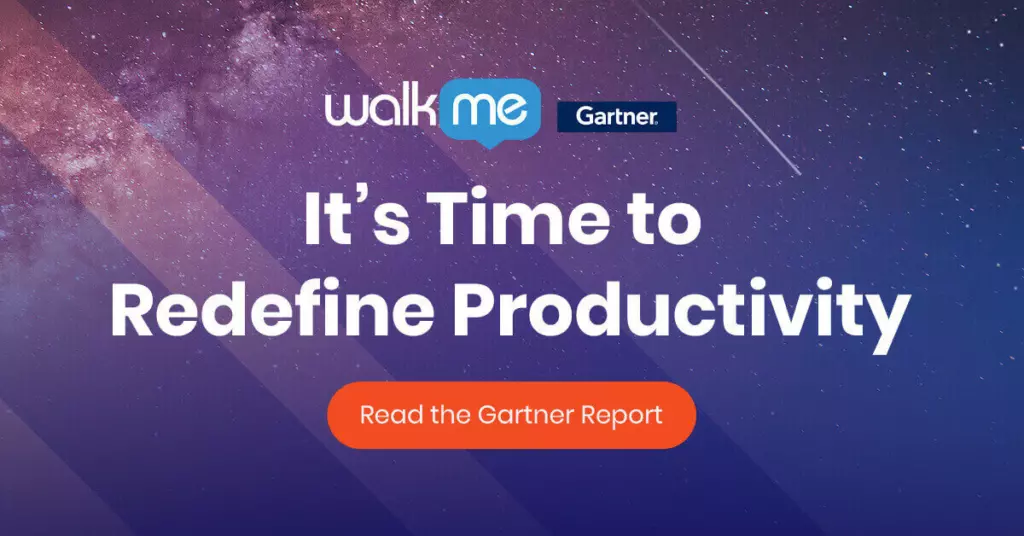The office as we knew it, is closed.
Now that organizations are no longer working in one physical location, how can leaders ensure continued levels of productivity?
Usage alone offers an incomplete view
Traditionally, leaders would attempt to monitor employee performance through the completion of tasks, time-on-screen, and individual application usage. This is simply trying to put a puzzle together with fragmented and missing pieces. The end result is disappointing for higher-ups and frustrating for employees.
WalkMe’s Director of Strategy and Analyst Relations, Ofir Bloch found Digital Adoption Solutions listed in Gartner’s new report: Getting Value From Employee Productivity Monitoring Technologies for Remote and Office-Based Worker*.
The research on productivity monitoring is extremely relevant to WalkMe’s questioning of how productivity itself is traditionally measured, and why it needs to be redefined in a remote work reality.
“The concept of productivity is highly context-specific. Therefore, it is extremely difficult to quantify.” – Gartner
So now that remote work is becoming a fixture of regular business life, how can leaders accurately assess the productivity of their organizations? And how can they ensure that they do so successfully?
The complete user journey across all applications is the key
This is where leaders need to “zoom-out” in order to get the full picture. Trying to piece together all of the data from individual application usage data will be both tedious and incomplete. Digital Experience Analytics will actually asses the user journey holistically – delivering an accurate and complete overview of productivity.

This view allows for comparison between user journeys, and a deeper understanding of where users are getting stuck. The remote employee as the user is navigating multiple apps, many times to complete a single process. The process from beginning to end needs to be assessed in order to understand if it was a productive amount of time and effort on the part of the employee, and ultimately the company.
The Gartner report carefully assesses various technologies used to monitor productivity. Although most of these technologies were intended for more varied purposes, they can also help leaders in understanding productivity in our new reality.
For specific examples of vendors and their intended uses, like Digital Adoption Solutions, you can read the full report here.
The report also offers practical steps towards rolling out productivity monitoring software successfully, and in a way that won’t damage the trust of employees. We believe that this insightful research provides the type of careful strategizing that can determine whether or not a company succeeds in this unprecedented time of remote work.

*Gartner, Getting Value From Employee Productivity Monitoring Technologies for Remote and Office-Based Workers, Helen Poitevin, Federico De Silva, Bart Willemsen, Jonathan Care, Rashmi Choudhary, 29 April 2020

